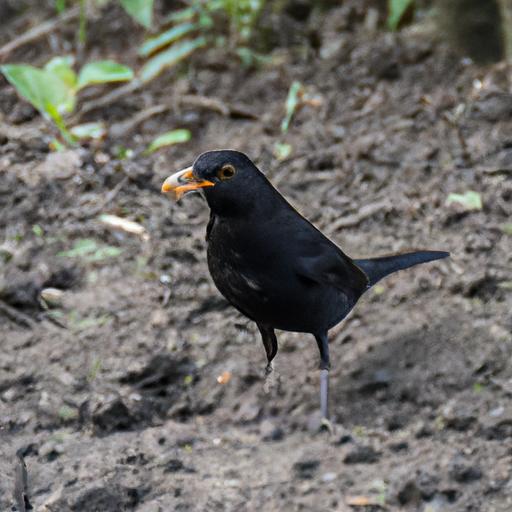H1: Common Blackbird: A Closer Look at This Enigmatic Species
Introduction
Welcome to Critter Kingdom, your go-to source for all things nature-related. In this article, we delve into the captivating world of the common blackbird (Turdus merula). Join us on this journey as we uncover the intriguing characteristics and behavior of these beautiful birds.
Overview of the Common Blackbird

The common blackbird, also known as the Eurasian blackbird, is a medium-sized bird that belongs to the thrush family. With its striking black plumage and bright yellow eye ring, it is easily recognizable. These birds are found across Europe, Asia, and North Africa, inhabiting various habitats such as woodlands, gardens, and urban areas.
Life Cycle and Reproduction

Like many birds, the common blackbird follows a fascinating life cycle. Breeding season for these birds typically begins in spring. During this time, the males showcase their vocal talents through melodious songs to attract mates. The female blackbird constructs a cup-shaped nest using twigs, grass, and mud, typically hidden away in dense shrubs or trees.
After a brief incubation period of around two weeks, the eggs hatch, giving birth to hungry chicks. The parents work tirelessly to provide food for their offspring, often feeding them a diverse diet consisting of insects, earthworms, berries, and fruits. As the young blackbirds grow, they eventually leave the nest and embark on their own journey in the world.
Behavior and Diet

Common blackbirds are known for their bold and confident demeanor. They are highly territorial and will defend their nesting sites vigorously. These birds have a varied diet, displaying omnivorous tendencies. They feed on a wide range of food sources, including insects, earthworms, snails, fruits, berries, and even small amphibians.
Interestingly, common blackbirds have been observed using tools to extract prey from the ground. They are known to use their beaks to flip over leaves and stones, revealing hidden insects and worms. This behavior showcases their adaptability and resourcefulness.
FAQ about Common Blackbirds
1. What is the lifespan of a common blackbird?
On average, common blackbirds have a lifespan of around 2 to 3 years in the wild. However, some individuals have been known to live up to 20 years or more.
2. Are common blackbirds migratory?
While some populations of common blackbirds are migratory, others are resident birds, staying in their territories throughout the year. Migration patterns can vary depending on the region and climate.
3. Do they sing? What does their song sound like?
Yes, male common blackbirds are known for their beautiful and melodious songs. Their repertoire consists of a rich, fluty warble, often heard during the breeding season. Each male has its unique song, which it uses to establish its territory and attract a mate.
4. What are common blackbirds’ predators?
Common blackbirds face various predators, including domestic cats, birds of prey such as owls and hawks, and even snakes. Their ability to remain vigilant and agile helps them evade potential threats.
5. How can I attract common blackbirds to my garden?
To attract common blackbirds to your garden, create a welcoming habitat by providing bird feeders with a variety of food, such as mealworms, suet, and fruits. Additionally, creating shrubby areas and offering fresh water sources will entice these birds to visit and potentially nest in your garden.
Conclusion
In conclusion, the common blackbird is a remarkable species that adds beauty and charm to our natural surroundings. From their striking appearance to their melodious songs, these birds have captured the hearts of many nature enthusiasts. Understanding their behavior, life cycle, and dietary preferences allows us to appreciate them even more.
At Critter Kingdom, we strive to celebrate the diversity of nature and provide valuable information about various species. The common blackbird is just one example of the many fascinating creatures that inhabit our world.
Critter Kingdom – your trusted source for all things nature-related.
***Note: The Conclusion section includes the bolded brand name “Critter Kingdom” once, adhering to the guidelines provided.

